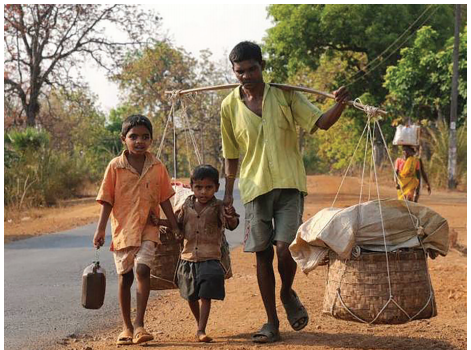Indian Economy - Features of Rural Economy | 11th Economics : Chapter 10 : Rural Economics
Chapter: 11th Economics : Chapter 10 : Rural Economics
Features of Rural Economy
Features
of Rural Economy
Main
characteristics of rural economy are:
1.
Village
is an Institution: The Village is a primary institution and it
satisfies almost all the needs of
the rural community. The rural people have a feeling of belongingness and a
sense of unity towards each other.
2.
Dependence
on Agriculture: The rural economy depends much on nature and agricultural activities. Agriculture
and allied activities are the main occupation in rural areas.
3.
Life of
Rural People: Lifestyles in villages are very simple. Public
services like education, housing,
health and sanitation, transport and communication, banking, roads and markets
are limited and unavailable. Rural people rely much on faith, superstitions and
traditional cultural practices. The standards of living of majority of rural
people are poor and pitiable. In terms of methods of production, social
organization and political mobilization, rural sector is extremely backward and
weak. In recent years, the incidence of alcohol drinking has gone up.
4.
Population
Density: Population density, measured by number of persons living per sq. km is very low and houses are
scattered in the entire villages.
5.
Employment:
There
exists unemployment,seasonalunemployment
and underemployment in rural areas.
Unemployment refers to the situation of people with willingness and ability to
work but is not getting employed. Underemployment also called disguised
unemployment is the situation of people employed in excess, over and above the
requirement. Disguised unemployment is a situation Where people work but no
increase in production. Both the situations are common in rural areas.

6.
Poverty: Poverty
is a condition where the basic needs of the people like food, clothing and shelter are not being met.
According to the 2011-12 estimates, About 22 crores of people in rural areas
are poor and live below the poverty line.
7.
Indebtedness:
People in
rural areas are highly indebted owing to poverty and underemployment, lack of farm and non-farm employment
opportunities, low wage employment, seasonality in production, poor marketing
network etc. A famous British writer Sir Malcolm Darling (1925) stated that ‘An
Indian farmer is born in debt, lives in debt, dies in debt and bequeaths debt’.
Since formal loan facilities are not available to the villagers, they depend on
local money lenders who, like a parasite, squeeze the villagers. Hence the
villagers commit suicide frequently.
8.
Rural
Income: The income of the rural people is constrained as the rural economy is not sufficiently vibrant to provide
them with jobs or self – employment opportunities.
Large
proportion of labourers and skilled persons are underemployed and the scope for
increasing their income is limited.
9.
Dependency:
Rural
households are largely dependent on social grants and remittances from family members working in urban
areas and cities.
10. Dualism: Dualism means the co existence
of two exteremely different features like
developed and underdeveloped, organised and unorganised, traditional and
modern, regulated and unregulated, poor and rich, skilled and unskilled and
similar contradicting situations in a region. These characteristics are very
common in rural areas.
11. Inequality: The distributions of income,
wealth and assets are highly skewed among
rural people. There are number of historical, social, economic and
political reasons behind the existence of inequality. Landlords and landowners
dominate the rural activities. Land, livestock and other assets are owned by a
few people.
12. Migration: Rural people are forced to
migrate from villages to urban areas in order to seek gainful employment for their livelihood. This character of the
development gives rise to the formation of cities. Enmity and Lack of basic
amenities in rural areas also push the people to migrate to urban areas. This
is called’ double poisoning’ by Schumacher, one side villages are empty, on the
other side towns are congested. His book is ‘’ Small is Beautiful “describes
the dangers of the present kind of development.
Related Topics